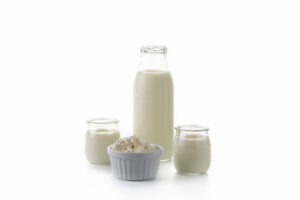
trends
Mammalian colostrum, often referred to as “liquid gold,” is a prized reservoir of essential nutrients, growth factors, probiotics, prebiotics, antibodies, and various bioactive compounds. Bovine colostrum (BC) has emerged as a sought-after ingredient in the feed, food, and pharmaceutical sectors, with diverse forms now commercially accessible in numerous countries. BC is a key component in functional foods and supplements designed for athletes, human medicines, pet nutrition plans, and complementary feeds for specific livestock categories like piglets and calves.
Typically constituting about 0.5% of the annual output in dairy breeds, the volume of BC produced by a cow post-calving is relatively modest. Despite its limited availability, BC commands a higher market value due to its exceptional nutritional properties. The demand for BC continues to rise, outpacing other dairy by-products. Nonetheless, detailed information about the market size for BC in the food and pharmaceutical industries, along with insights into future developments, remains scant in scientific literature. This scarcity is attributed to both industrial confidentiality and the relatively niche scale of the BC business compared to other dairy products, rendering it specific, limited, and intended for a select audience.
Specific data on volume demand and market price trends for powdered bovine colostrum is unavailable. However, as of 2001, the global colostrum business was estimated to be approximately US $15 million with the global market at approx. US $100 million. Projections from Transparency Market Research in 2021 anticipate a substantial growth, with expectations for the market to reach around US $4 billion by the year 2027.
The interest of the dairy industry and scientific communities in the beneficial properties of BC is constantly increasing, with focuses on various species and multiple research fields.
Functional Foods and Dietary Supplements
Extensively studied for its nutraceutical properties, bovine colostrum (BC) is recognized as a valuable component for athletic performance and overall health. Clinical trials in the early 2000s highlighted BC’s positive impact on muscle mass, bone health, and immune resilience in adults. Despite limited evidence on body composition effects, BC, rich in antibodies and growth factors, holds promise for sport and weight loss diets. Future research should delve into dose-response profiles and underlying mechanisms. BC, with leptin and a lipid profile featuring 54% mono- or polyunsaturated fatty acids, is anticipated to offer adult consumers substantial benefits, including reduced gastrointestinal issues during physical activity.
Infant Formula
Bovine colostrum (BC) is a common ingredient in infant formula production, blended with other milk derivatives following rigorous quality checks and standard procedures. Research indicates that optimal supplementation of BC for infants, guided by age, timing, and dosage, can offer protective effects against gastrointestinal diseases like rotaviral diarrhea and necrotizing enterocolitis. While exclusive BC feeding is not recommended due to nutritional imbalances compared to human milk, using BC as a supplement within established nutrition guidelines appears safe and beneficial. Gentle processing and pasteurization methods are crucial to preserve the synergistic bioactivity of immunoglobulins and other factors, making BC a considered nutritional supplement for specific pediatric subpopulations. Supplementation with BC is particularly suggested when mother’s milk or donor human milk is unavailable or insufficient, supporting therapies like probiotics previously considered unsafe for immunocompromised infants and children.
Clinical Use and Pharmaceutical Industry
Rathe et al. (2014) extensively reviewed the positive effects and good tolerability of bovine colostrum (BC) products on gut health in adults, highlighting its protective role against cardiovascular diseases, colon cancer, and inflammatory bowel disease, along with its favorable impact on epithelial growth and repair (Anderson et al., 2019; Silva et al., 2019). BC has shown efficacy in treating and preventing gastrointestinal diseases, immune system disorders, bone resorption, and allergies due to its rich composition of growth factors, nutrients, hormones, and paracrine factors that aid in mucosal healing (Gomes et al., 2021). Additionally, BC modulates immune system function, enhances lymphocyte subsets, macrophages, and dendritic cells, and increases regulatory cytokines like interleukin 10. Animal models and human trials further confirm BC’s efficacy in conditions like inflammatory bowel diseases and infectious diarrhea (Chandwe and Kelly, 2021). Recent systematic reviews underscore BC’s benefits on intestinal and respiratory recovery without adverse effects, attributing this to its immune system enhancement and modulation capabilities (Guberti et al., 2021). Moreover, BC has been utilized for topical tissue and mucosa repair, wound healing, and in various clinical settings such as uro-gynecology, dietary supplementation for older adults, and supporting therapy for critically ill patients. Studies also suggest BC’s potential in increasing neutrophil counts in leukemia patients, reducing acute diarrhea in infants, alleviating enteric inflammation in exposed children, and improving pulmonary function in children with respiratory allergies (Ghosh and Iacucci, 2021; Caysido, 2019; Barakat et al., 2019; Donowitz et al., 2019; Oloroso-Chavez et al., 2017). While some gaps in evidence exist, particularly regarding BC’s role in infections in vulnerable populations and in disease prevention, changes in gut microbiome post-BC administration underscore its potential in preventing infections and diseases like colorectal cancer, warranting further well-designed prospective studies in varied clinical and nonclinical contexts (Ghosh and Iacucci, 2021).
brown sugar icebox cookies
A prize winning simple cookie recipe with low sugar content of only 11 grams per two cookies.
future outlook
Given the considerable variability in bovine colostrum (BC) composition, standardizing powdered BC (PBC) processing proves challenging. Ongoing research is essential to enhance our understanding and management of BC variations. Issues like supply consistency and calf welfare implications further complicate matters, with some cattle breeds not producing sufficient BC for immediate calf needs. Seasonal factors may impact BC delivery to processing plants. Ethically, there’s a risk of BC production becoming a business opportunity, potentially affecting young stock welfare. To safeguard animal health, international regulations should be established to ensure quality preservation without compromising welfare amid rising BC market prices.
In dairy species, colostrum is primarily intended for feeding the neonate. In the case of cattle, BC shows nutraceutical properties and proven benefits that make it a very promising ingredient to be incorporated in foodstuffs and supplements, stimulating the interest of both the food and the pharmaceutical industries. The interest in BC is increasing year on year, particularly from medical science applications for curative purposes. There is room to promote the use of BC in the dairy industry, but, in parallel, research is needed to explore the properties of this matrix and define specific quality standards and sampling protocols. Moreover, indirect assessment of BC quality, including IgG concentration, through infrared tools is feasible considering the promising prediction accuracy. Being able to determine and monitor the BC composition will translate into the possibility to set up a payment system for suppliers in future times. Finally, with the price of colostrum rising, the risk of compromising health and welfare of young stock is not negligible, as the willingness to sell colostrum could take over. The scientific community is invited to discuss the possibility to modulate and monitor the offering of BC, as through a quota-like system. Above all, stakeholders of the dairy chain must cooperate horizontally to ensure proper destination of BC within the farm and to support related decision making.
Remember, no more than 6 teaspoons (25 grams) of added sugar per day for women and 9 teaspoons (38 grams) for men. The AHA limits for children vary depending on their age and caloric needs, but range between 3-6 teaspoons (12 – 25 grams) per day. Children under two should have zero grams of sugar per day.
If you like natural health tips like the ones above you can learn more in Immune For Life
